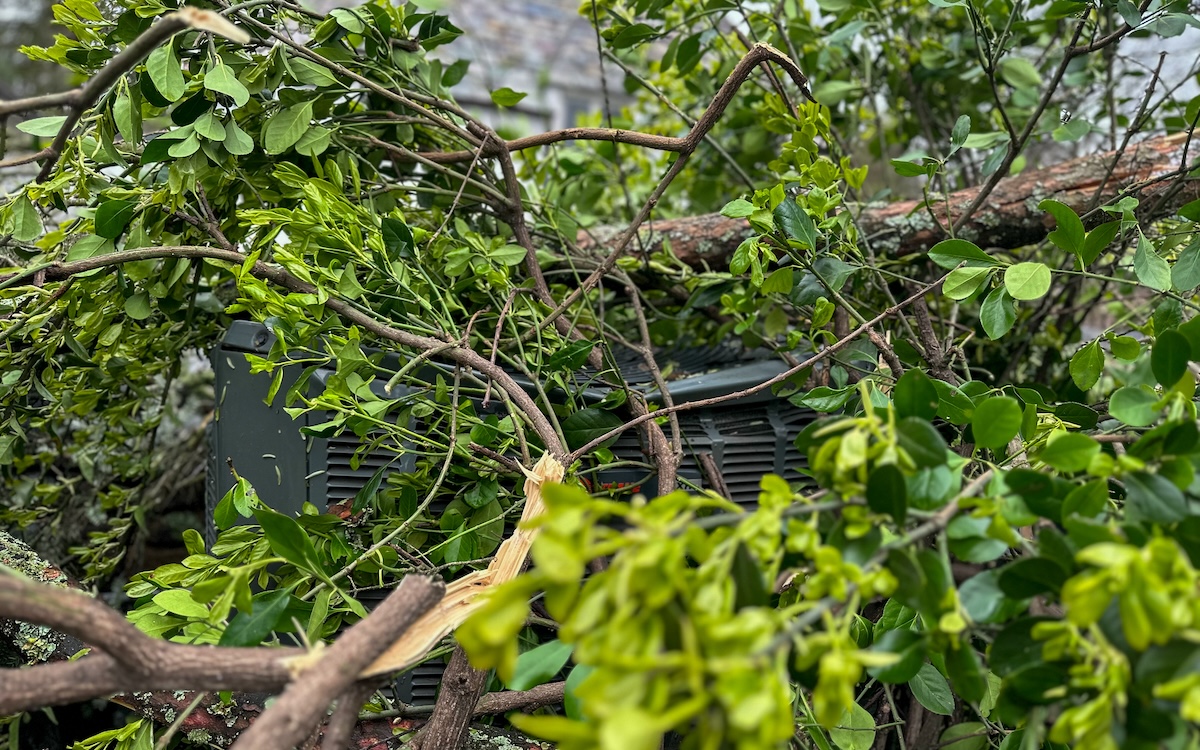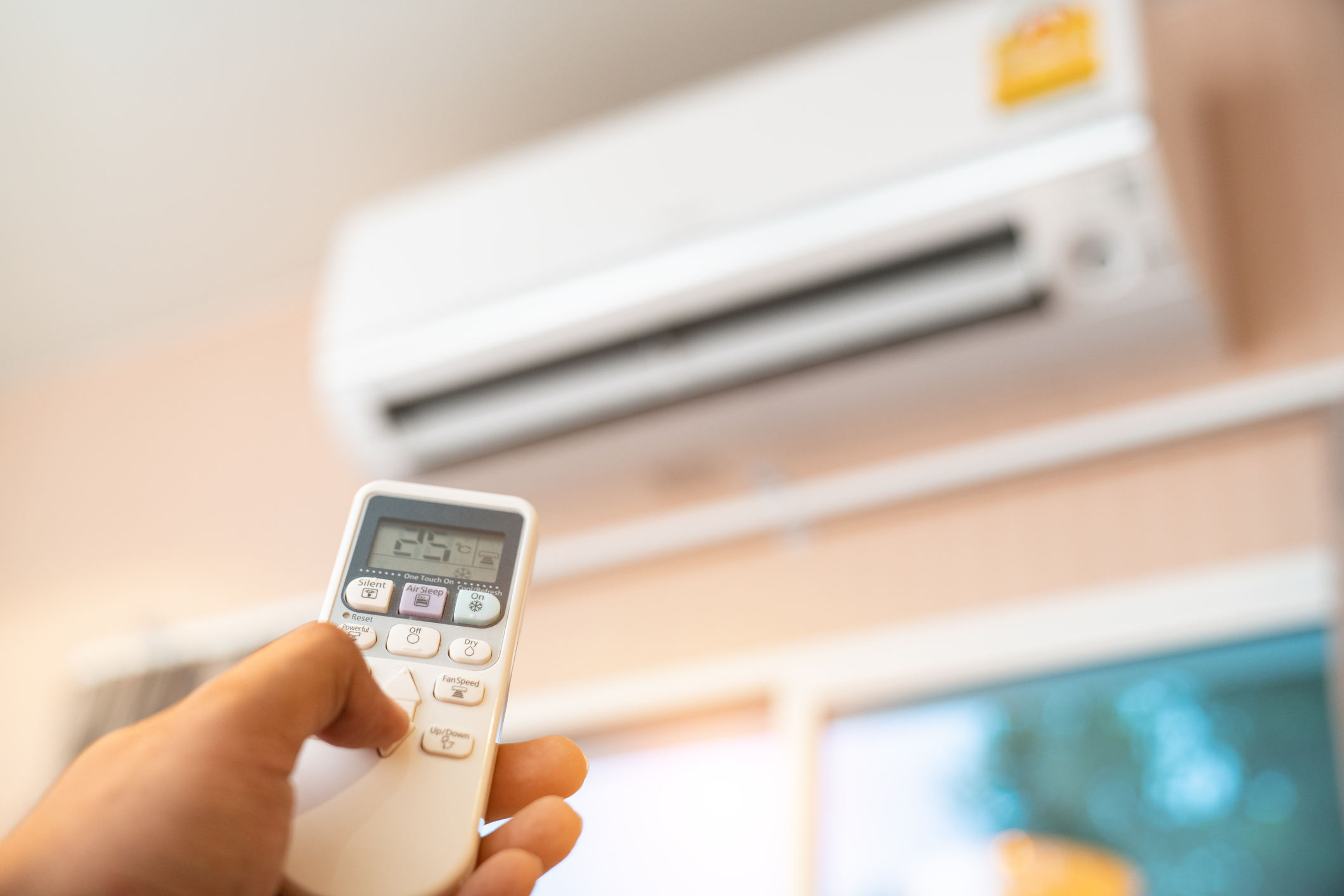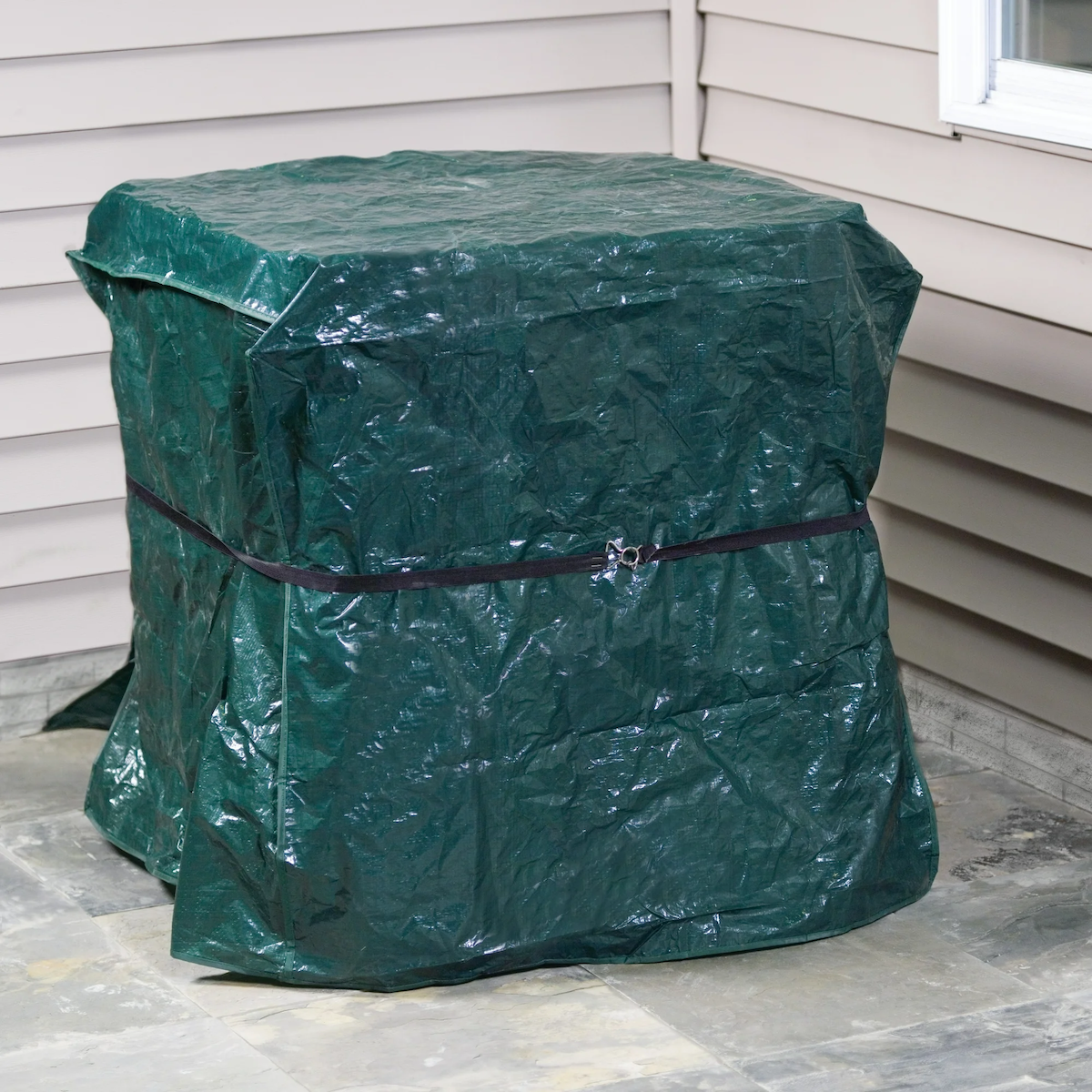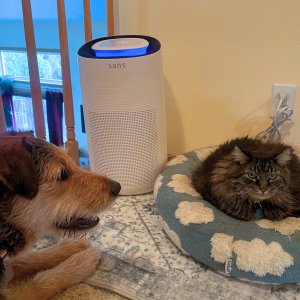

We may earn revenue from the products available on this page and participate in affiliate programs. Learn More ›
Hurricanes and other strong storms can wreak havoc on your property, from power outages and flooding to damage resulting from falling trees and blowing debris. Storms can also significantly damage HVAC systems if homeowners don’t take proper precautions before and during a storm, which can lead to a major inconvenience and costly repairs.
HVAC units are particularly susceptible to a range of storm impacts. Heavy rain and flooding, for example, can cause excess water to accumulate around an outdoor HVAC unit, which can lead to severe damage to the electrical components or even an electrical fire. While direct lightning strikes are unlikely, a nearby lightning strike can cause a surge in the power supply that can overload the HVAC system’s circuitry and shut it down. Finally, hail and flying debris due to strong winds can damage the unit as well.
Whether you live in an area prone to hurricanes or just the average thunderstorms, it’s important to take the following steps before, during, and after a storm to protect your HVAC system from the elements.
What to Do Before and During a Rainstorm or Thunderstorm
HVAC systems are not designed to operate during a major storm. While it might be temporarily uncomfortable in the house without the AC on, it’s necessary to turn off your HVAC system to safeguard it in the long run.
“Protecting your HVAC system during a storm is as simple as shutting the system off at the breaker and covering the outdoor portion of your equipment,” says Ben Baca, implementation manager and HVAC subject matter expert at SmartAC.com. Make sure all the breakers are off: split-type systems typically have two breakers (one for the air handler or furnace and one for the AC or condenser), while packaged units have one or two breakers, and boilers have a single breaker.

“Running an air conditioner while it is obstructed or covered can severely damage compressors and shorten the lifespan of your equipment,” says Baca. “Also, attempting to operate a furnace or boiler with a blocked or broken flue pipe can have serious consequences, including personal injury or death to you or your family.” Additionally, if you don’t take precautions, the resulting damage may not be covered by the manufacturer’s warranty, which could lead to a very costly project after the storm.
It is safe, however, to leave your HVAC system running during a rainstorm without lightning. Just make sure to check that the area around the outdoor unit is not filled with standing water. If the unit gets flooded, then turn it off immediately using the electrical panel inside your house, and have it inspected by a professional before turning it back on.
If you have a window AC unit, unplug it during a thunderstorm to avoid damage. A power surge could melt the plug and electrical outlet on your unit and ruin the circuitry.
Here are some ways to prepare your HVAC system even before a storm arrives:
- Install lightning rods, conductors, and ground rods to create an alternate path for lightning to reach the ground.
- Elevate outdoor HVAC units off the ground using a concrete platform or platform blocks to protect against flood damage.
- Secure outdoor units to protect against wind damage.
- Add surge protectors for indoor and outdoor HVAC units to safeguard against sudden voltage spikes.
- Shield the units from hail and debris by installing a hail guard or protective cover.
How to Prepare Your HVAC Unit Before a Hurricane
While you can wait to turn off the HVAC system during a typical thunderstorm, it’s imperative to take several steps before a hurricane arrives since the damage could be exponentially worse. In addition to potential lightning issues, a hurricane can bring major flooding, high winds, and flying debris.
- Consider lowering the temperature of the AC to cool down the house before you need to turn off the unit when the storm nears.
- Turn the AC off at the breaker box as the storm approaches to protect it from power surges.
- “Once these breakers are shut off, you can cover the outdoor equipment with a tarp, plywood, or heavy cardboard to keep hail and debris from causing damage,” says Baca. “Do not use any sort of screws or fasteners to attach coverings; bungee cords are a great securement option.”
- Secure the unit by using hurricane straps or brackets. Tighten the bolts that anchor your compressor to the concrete slab and make sure they can withstand wind of at least 160 miles per hour (mph).
- Clear the surrounding area by trimming trees and putting patio furniture and other items away.
If you have a window AC unit, unplug it and remove it from the window before the hurricane begins so you can close the window completely. Plus, strong winds can blow a window AC out of place and damage the unit, not to mention your window and nearby belongings inside. If you are unable to remove the unit, purchase a cover with straps to protect it.

Assessing the Situation After a Storm
While you might be eager to get your HVAC system back up and running right after the storm passes, it’s imperative that you first assess any possible damage. Look for dents; loose, disconnected, or melted wires; an exploded capacitor, a tripped circuit breaker; an unresponsive thermostat; or debris lodged in the system.
Make note of any unusual smells or sounds and whether other electronics throughout the home are damaged. If you suspect a gas leak or see exposed wires, evacuate your home immediately and call emergency services for assistance.
Baca recommends ensuring that any coverings or obstructions are removed from the outdoor equipment before restarting the system. “Visually inspect the furnace or boiler flue or vent pipes to ensure they are clear and completely intact,” he says.
Don’t take a risk by trying to repair the unit yourself after storm damage. “If you are unsure about the condition of your HVAC system after a storm or unable to inspect it yourself, it’s always a safe idea to have the system professionally inspected,” says Baca.
Steps You Can Take All Year Long
Don’t get caught unprepared next time severe weather strikes. Fortunately, there are actions you can take throughout the year to stay ready for the next storm.
Baca always advises customers to have regular preventive maintenance and safety checkups. “You should have your system professionally inspected or tuned up at least once per calendar year,” he says. Regular inspections and maintenance by a professional can help identify and address any problems with the system before severe weather arrives.
Invest in a smart thermostat so you can manage your HVAC system, whether home or not, when a storm arrives. Protect air vents from water and debris damage by installing protective covers or grilles to the outdoor units. Keep nearby trees and other vegetation trimmed throughout the year. Finally, consider investing in a backup power source, such as a generator.
